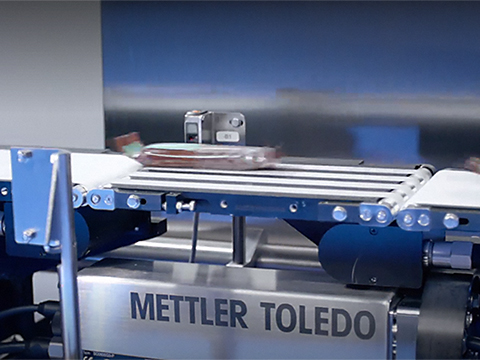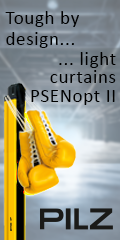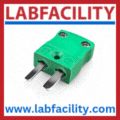
Posted to News on 4th Apr 2025, 13:00
Delivering Quality at High-Speed in the Snack and Confectionery Industry
Rob Stevens, Market Manager at Mettler-Toledo Product Inspection explores how manufacturers can overcome production challenges in high-speed snack and confectionery applications without compromising quality.

In an industry where speed and quality go together like crisps and salt, snack and confectionery manufacturers face the constant challenge of keeping up with consumer demand without sacrificing product integrity.
Snacking continues to become more popular globally. It is even predicted that by the year 2030, global sales of savoury snacks could reach a value of USD386.8 billion. It's easy to see that the pressure to deliver a diverse range of high-quality products at speed has never been greater.
High-speed snack and confectionery production poses several challenges, particularly in product handling and rejection. When products are processed at high speeds, they are more susceptible to damage or misalignment, leading to increased rejection rates. Handling delicate items or products with specific packaging requirements, like flow-wrapped goods, becomes more complex as speed increases, elevating the risk of product rejection and waste.
Weight Challenges
Accurate weighing is further complicated by the sealed edges of flow wraps, which can cause handling and sorting issues, and the need for stricter tolerances with smaller, lighter products. Advanced dynamic checkweighers incorporating FlashCell technology from Mettler-Toledo help solve this issue by effectively handling products with brief weighing times. They also offer enhanced accuracy and reliable handling, providing consistent weight measurements and product quality, even at speeds of up to 800 products per minute.
Contaminant Detection
Product purity is hugely important in snacks and confectionery and can be challenging due to the high speed and variety of products on the production line. Effective contaminant detection is essential for both unpacked and packed products to maintain consumer safety and brand integrity, and reduce the risk of product recalls. Manufacturers can use a combination of metal detection and x-ray inspection technologies to meet these needs efficiently.
Metal Detection and X-ray Inspection
Metal detectors specialise in detecting metallic contaminants, such as ferrous, non-ferrous and stainless steel particles. They work by generating an electromagnetic field and identifying metal particles that disrupt this field. Metal detection systems can be used at various points on the production line, from the start of production to inspect raw materials, to the end of the line after primary packaging.
However, the most popular insertion point in snack foods and confectionery manufacturing is just prior to packaging. Products are weighed using multi-head weighing technology, then drop through the metal detector and into the bag which is then sealed. This technology is ideal for high-speed production environments where rapid, accurate detection of metal contaminants is needed.
Inspection at this point minimises the risk of metal contaminants in the finished product and overcomes any packaging material limitations that may exist at primary or secondary packaging stage. Productivity can be further boosted by technology, such as an Automatic Test System (ATS) from Mettler-Toledo which improves test accuracy and reduces testing duration, whilst also reducing the number of operators required to perform the test from two to one. From a total cost of ownership perspective, metal detection at this Critical Control Point (CCP) is an ideal choice.
In both horizontal and vertical applications, metal detection systems provide efficient and accurate results. Vertical inspection setups, particularly with the use of throat metal detectors in VFFS (Vertical Form Fill Seal) applications, are highly effective for inspecting products like snack foods and crisps. These detectors are installed between the weigher and the bagging machine, allowing free-falling products to be inspected as they move through the system. This method means that foreign body contaminants are identified before packaging, which is especially beneficial in high-speed production environments.
X-ray inspection systems are ideal for detecting a wide range of contaminants in packed products either at the primary or the secondary packaging stage. For x-ray inspection, this may include contaminants such as glass, metal, mineral stones, dense plastics, rubber compounds and even agglomerates - an issue commonly faced by crisp manufacturers. Agglomerates, or clumps of seasoning powder, can form during the manufacturing process and affect product quality by altering taste, texture and appearance.
The x-ray beams penetrate packaging to identify foreign objects. This process is based on density differences. While in-line inspection of single flow-wrapped products is effective for example, end-of-line inspection, such as scanning a full box of chocolate bars, offers additional advantages. It allows for the detection of contaminants, meaning that each box is thoroughly screened for foreign bodies before reaching consumers. This layered inspection process significantly enhances product safety and quality control. Beyond contaminant detection, x-ray systems can also perform a range of integrity checks, such as verifying product shape, measuring mass, detecting missing or broken items and checking proper fill levels, further enhancing quality control and reducing the likelihood of defective products reaching consumers.
Choosing the technology best suited to a production line depends on the product type and contamination risks. Metal detectors are ideal for the inspection of products before they are packaged or within the primary packaging stage where detecting metal contaminants early can save the manufacturer production costs. X-ray inspection systems are preferred for packed products where detection of a broader range of contaminants is required. They are suitable for packaged products and provide optional quality and integrity checks which can be performed simultaneously, typically at end-of-line.
Cost constraints are a major consideration for manufacturers in this sector, particularly since many snack and confectionery products are sold at low price points, making it challenging to justify investment in high-end product inspection systems. While the upfront costs of metal detection or x-ray inspection may seem high, these technologies can significantly reduce recall-related expenses and potential reputational damage - saving manufacturers more in the long run.
In addition, leveraging AI-driven functions, with a focus on sustainability, can further help manufacturers combat rising costs. By optimising inspection efficiency through intelligent algorithms, manufacturers can reduce energy consumption and minimise waste, ultimately lowering operational costs.
Plastic Contamination
In addition to metallic contaminants, the use of plastic moulds in the production process introduces the risk of plastic contamination, especially in confectionery and snack manufacturing, where complex machinery and moulds are often deployed. Plastic contaminants can arise from wear and tear on moulds, broken machinery parts or even packaging materials, making it critical to have robust detection systems.
X-ray inspection systems provide an effective solution by identifying plastic foreign objects based on their density, even when the density difference between plastic and the product itself is minimal. While challenging, x-ray systems can be finely calibrated to detect various types of plastic, from dense polypropylene fragments to lighter plastic films, across different product types and applications.
In confectionery products, where the texture and density of the food can vary widely, traditional inspection methods may struggle to catch plastic contaminants. X-ray technology, however, offers higher sensitivity and reliability, meaning that products meet stringent safety and quality standards, minimising the risk of plastic contamination reaching the consumer, and protecting brand reputation.
Robust Testing and Setup Procedures
To check that the metal detection system is fully optimised to detect contaminants, manufacturers can integrate automatic testing systems. Automatic Test System (ATS) from Mettler-Toledo, for example, automates the testing process of metal detectors integrated into vertical form, fill and seal processes which are very common in the manufacturing process for bagged crisps, sweets and nuts.
ATS provides the most accurate testing of centreline sensitivity - representing the worst-case scenario for detection - by consistently simulating how contaminants might pass through the very centre of the aperture. This method delivers consistent performance testing and reduces the risk of contaminants going undetected, offering manufacturers greater confidence in product safety.
To help streamline operations and reduce the potential for human error, x-ray inspection technology can automatically set up the inspection of different products and facilitate several changeovers. By automatically adjusting to inspect new products or packaging formats, x-ray systems can make sure that consistent inspection accuracy is achieved by setting the correct detection sensitivity for that particular product.
Both technologies help protect brand integrity, reduce the risk of product recalls and improve operational efficiency, all within fast-paced manufacturing environments.
Equipment Cleaning and Hygienic Design
Accumulation of sugar and flour dust is another common challenge, as it can lead to corrosion and contamination in production equipment. At CCPs in the earlier stages of production, it is important to choose metal detection systems that minimise the escape of good product during the rejection process. Dust-tight seals should be considered as part of the machine specification.
Further downstream where goods are inspected on a conveyor belt, the solution is to install inspection technology with ingress protection IP65 and IP69 ratings, which are designed for easy cleaning and to withstand harsh cleaning regimes.
Label Verification and Allergen Management
Increasing regulations, such as Natasha's Law, have made label verification and allergen management critical aspects of food safety. Natasha's Law, introduced in the UK, mandates that all pre-packaged foods for direct sale include a full ingredients list with clear allergen labelling. This regulation aims to protect consumers with food allergies, giving them access to essential information about the products they consume.
Automated vision inspection systems are instrumental in meeting these requirements, as they can accurately verify label content, assisting in compliance and preventing costly recalls and protecting consumers' health.
These systems capture high-resolution images of each product's packaging as it moves through the production line. They use advanced algorithms to analyse the images, verifying that the labels contain the correct information, such as ingredient lists and allergen warnings. They can also detect misprints, missing information or incorrect labels.
Data Management in Production
Data management is also integral to modern snack and confectionery production, enabling manufacturers to monitor and optimise their production processes, as well as adhere to audit requirements. They can also play a significant role in boosting productivity through predictive maintenance and real-time analytics. These data management systems enable manufacturers to proactively address production issues, reducing downtime and improving product safety.
With Mettler-Toledo ProdX data management software, manufacturers gain real-time data collection and analysis, supporting compliance and quality assurance. The software efficiently tracks and documents product inspection data, which is essential for maintaining product safety standards and optimising operational efficiency.
As the snack and confectionery market continues to boom, manufacturers need equipment that can adapt to new product lines and regulatory changes. Investing in advanced product inspection technologies is essential to maintaining quality at high production speeds, while also future-proofing production lines. With the innovative solutions available, manufacturers can face the challenges head on while upholding product integrity and consumer safety.






